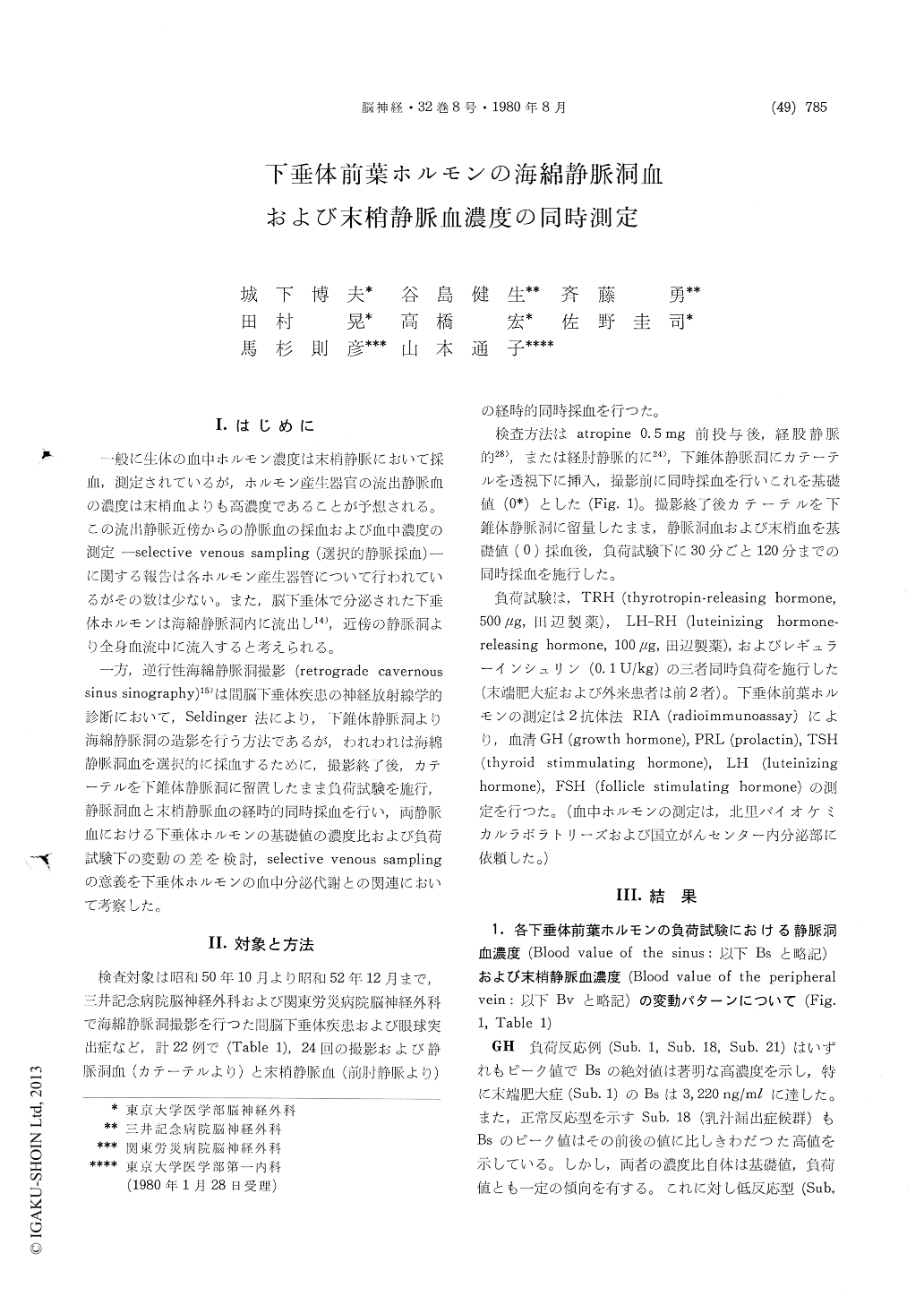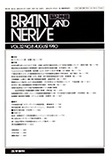Japanese
English
- 有料閲覧
- Abstract 文献概要
- 1ページ目 Look Inside
I.はじめに
一般に生体の血中ホルモン濃度は末梢静脈において採血,測定されているが,ホルモン産生器官の流出静脈血の濃度は末梢血よりも高濃度であることが予想される。この流出静脈近傍からの静脈血の採血および血中濃度の測定—selective venous sampling (選択的静脈採血)—に関する報告は各ホルモン産生器管について行われているがその数は少ない。また,脳下垂体で分泌された下垂体ホルモンは海綿静脈洞内に流出し14),近傍の静脈洞より全身血流中に流入すると考えられる。
一方,逆行性海綿静派洞撮影(retrograde cavernoussinus sinography)15)は間脳下垂体疾患の神経放射線学的診断において,Seldinger法により,下錐体静脈洞より海綿静脈洞の造影を行う方法であるが,われわれは海綿静脈洞血を選択的に採血上するために,撮影終了後,カテーテルを下錐体静脈洞に留置したまま負荷試験を施行,静脈洞血と末梢静脈血の経時的同時採血を行い,両静脈血における下垂体ホルモンの基礎値の濃度比および負荷試験下の変動の差を検討,selective venous samplingの意義を下垂体ホルモンの血中分泌代謝との関連において考察した。
In 22 subjects, selective venous sampling from the inferior petrosal sinus was performed under provocative tests along with simultaneous sampling of pituitary blood from the antecubital vein, after retrograde cavernous sinography. The difference of hormonal levels between sinus blood (Bs) and peripheral blood (Bv) was measured by two anti-body radioimmunoassay.
Most extreme difference of hormonal levels was observed in acromegalic subjects, where Bs/Bv ratio of GH was 6.0 in the basal value and 4.9 in the peak value, and that of PRL 3.5 and 4.6, re-spectively.
In subjects who reacted to provocative tests, the average ratio of Bs/Bv ranged from 6.9 to 1.1 in the order of GH, PRL, LH, TSH and FSH. Non-reactive subjects showed no significant difference in the hormonal levels between Bs and Bv. From the results obtained above, we assume a possible relationship between Bs/Bv ratio and metabolic clearance rate and between difference of Bs-Bv and basal production.
The integral of Bs-Bv difference measured from time zero to the time returned to the basal value under provocative tests represents the sum of basal production and pituitary reserve according to com-partment analysis.

Copyright © 1980, Igaku-Shoin Ltd. All rights reserved.


